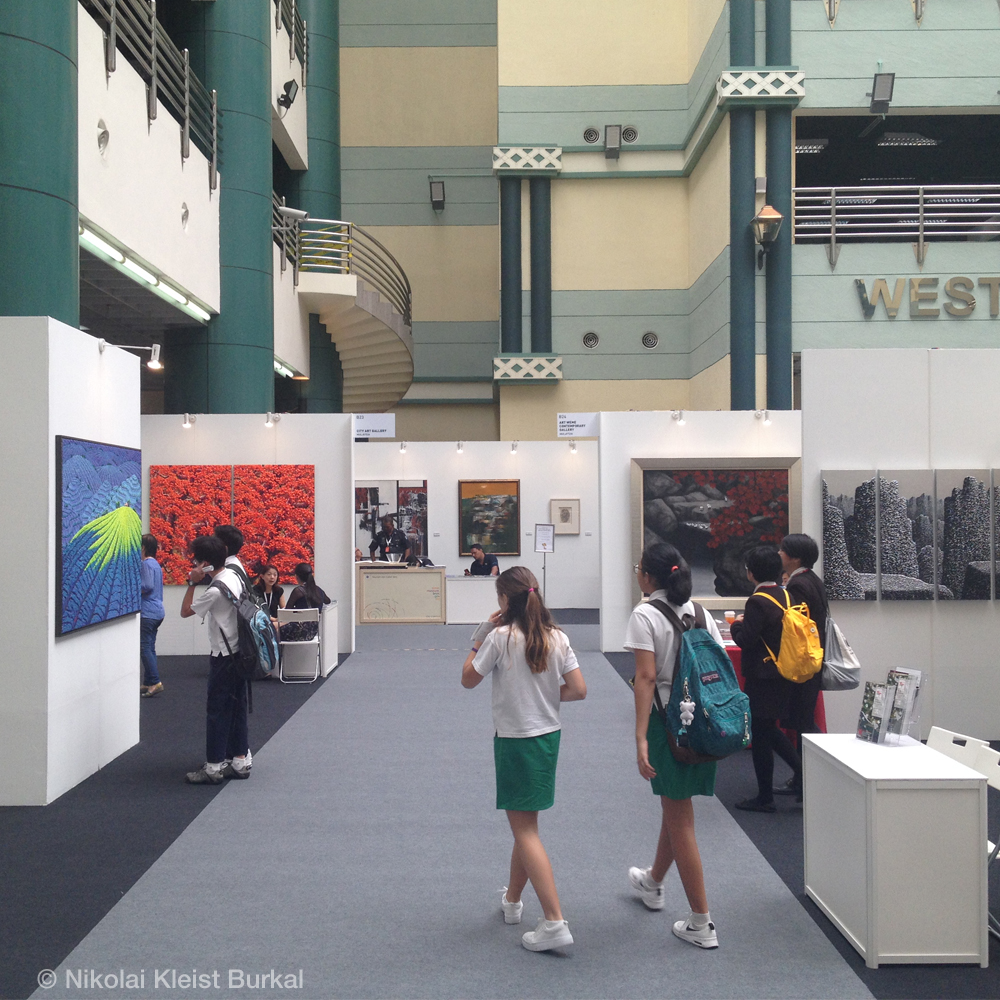This article is meant for anyone unfamiliar with visiting art shows, museum exhibits, or simply anyone not sure how to approach art in general.
The more exposure you get to art the better you’ll be at placing it in a context and thereby understanding it. So, in this article I’ve compiled a little step-by-step guide to assist anyone wanting to learn more about approaching art.
I believe many people associate art with either luxury or expertise. In other words, that you either need a lot of money or extensive knowledge about art history, art terms, specific periods etc., but I would argue that art really is for anyone. It just requires a little introduction to get you started.
Don’t get discouraged if you stumble over terms you are unfamiliar with, and forget about the money aspect of art for a bit. The purpose of this article is just to encourage you to start exploring art on your own!
Below you’ll see a few points you can use as a checklist when going to an art exhibit, or just when you are trying to digest a single art piece. I’ll try to expand on steps will be further discussion below.
A checklist – 10 things to look for in an art work:
At first glance, try to identify what you see:
- What is your immediate reaction? (Ignore the price at first, if it’s given)
- What material has been used? (Specific, such as acrylic, oil, watercolour, mixed media)
- What medium? (Painting, sculpture, photo, video, installation, or a performance)
- Can you identify a certain style? (Expressive, abstract, figurative, surreal, realism – or just try to use your own words)
Second, try to gather some information:
- Who made the work? (Artist, age, and nationality – if given)
- What is the title of the work? (If not left untitled)
- When and where was the artwork made? (Context of time and place)
- Is there any material about the work? (Wall text, description, flyer, article, artist statement)
Third, gather your thoughts:
- How does it fit with other works in the exhibition? (Solo or group show)
- What is your overall impression of the work and show? (Combine your observations)
First glance – what do you see?
At first, it’s important not to think too much as you are just gathering your impressions of an artwork. It goes without saying, that different artworks will trigger different reactions in different people. Your initial reaction is always interesting, as your perception of an artwork might change as you familiarise yourself with it.
Whatever the artwork is, try and see if you can identify what it is made of (material) and on what environment (medium) the material was applied on. For example, the material could be acrylic on canvas, and the medium could be a painting. The style of the artwork can be hard to identify if you don’t know the terminology, but don’t worry. You might know some or none of the styles, but just try to keep it simple.
If you see an artwork you can’t categorise in terms of style, then try to use your own words. To help you get started, some basic styles you might encounter could be abstract (no clearly identifiable figures), figurative (like portraits and landscapes), realistic (a clear depiction of something from real life), surreal (something sort of distinguishable, but usually in a dreamy scenery), or expressive (it can either be abstract or figurative, but often characterised with elements strongly distorted to invoke some sort of emotional effect).
These terms are here a bit simplified, but the point is more for you to familiarise yourself with the different styles.
Second – what information do you have available?
The steps in familiarising with the artwork is to gather whatever information is available to you. You can use the art label, wall text, or whatever other written information to see who made the artwork. What title is given, when and where was it made, and is there any information about the artwork or exhibit than can help you understand why the artwork was made?
This is all good information that can help you combine your own observations with what the artist intended to communicate through the artwork. After reading up on the information available, you might see the whole artwork in a whole new light, which often happens to me. In other words, you have a context to place the place the art in!
Third, what is your overall impression?
After combining your observations with the information gathered, what thoughts did it trigger in you? Your initial reaction is still completely valid, but knowing the context, you might have a more holistic view of the artwork or exhibit. It helps you to place the artwork in a context.
Placing the artwork in a certain period could help you understand the style used or maybe even why it was made. Styles, materials, and motives change over time, so there’s always a lot of clues left by the artists for the viewer to decode.
It is often said, that art is a language, and it’s a way of expressing something that can’t always be verbalised.
Personally, I always keep in mind; someone made this artwork, and it shows a snapshot of what was going through the artist’s mind at a certain time and place. Beside its aesthetic qualities, art can often give you great cultural and sociological insights.
Further reading
In case you want to familiarise more with general art terms, MoMA has a nice and easy glossary of art terms publicly available here:
- https://www.moma.org/learn/moma_learning/glossary/

